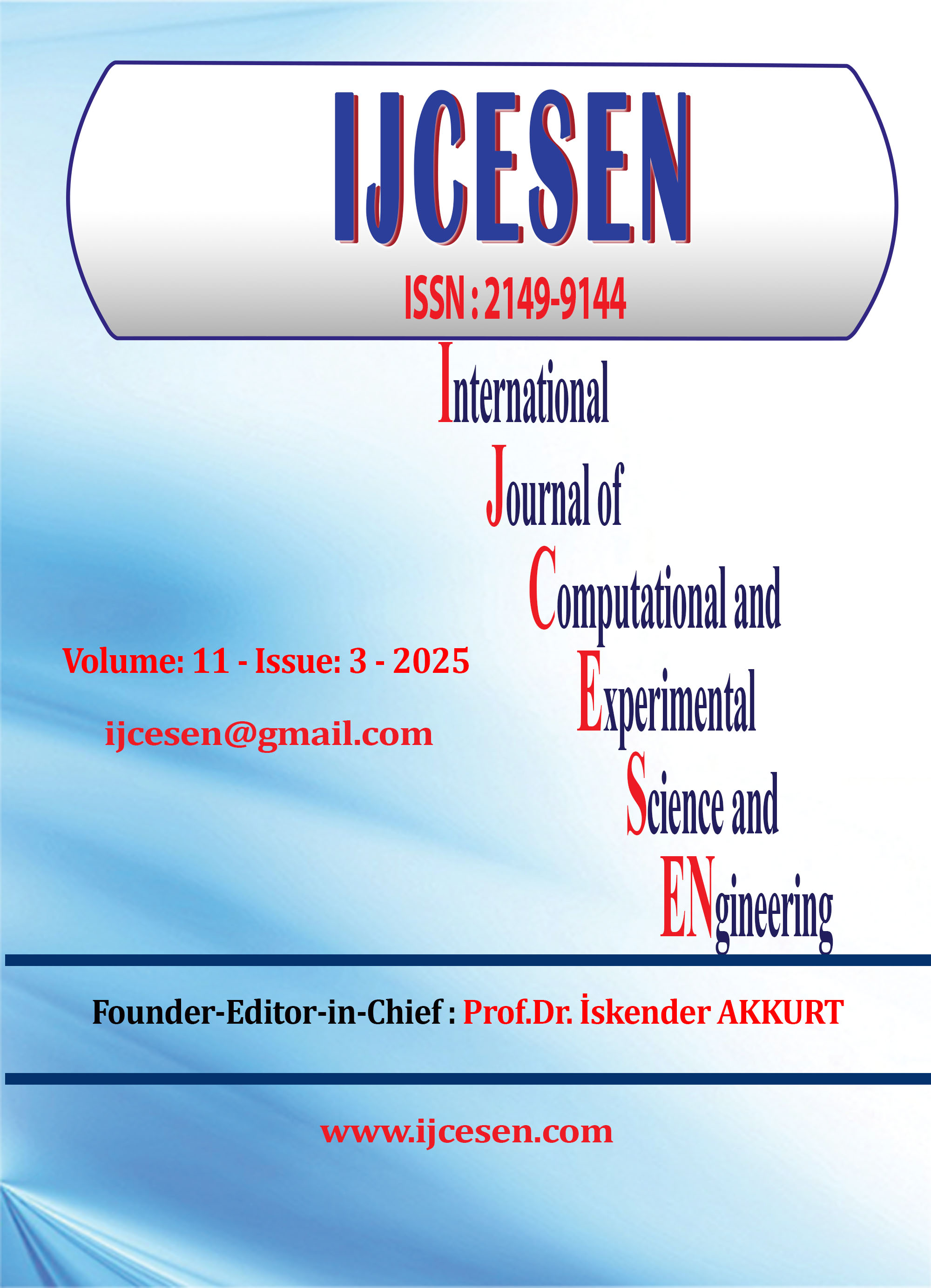Enhancing Trade Balance Prediction in Iraq Using Optimized Random Forests with Synthetic Data Augmentation
DOI:
https://doi.org/10.22399/ijcesen.3615Keywords:
Trade balance, Random forest, Synthetic data generation, GMM, hyperparameter optimization, economic forecastingAbstract
This research applied the Random Forest algorithm to analyze and forecast the trade balance based on a set of binary economic indicators (surplus/deficit) to meet classification requirements. The trade balance is a critical economic indicator that represents the difference between a country's exports and imports. Several techniques were used to enhance the prediction accuracy. One of these techniques is generating synthetic data using generalized matrix models (GMMs) to amplify the data, which helped the model avoid overfitting. A set of parameters of the Random Forest algorithm were also modified to enhance the prediction accuracy. The model was trained and evaluated 30 times using random variables generated by the random number function to ensure its stability, achieving an accuracy of 98.23%. These results explains the effectiveness of machine learning algorithms in processing economic data and extracting patterns from them.
References
[1] Nuraini, P. (2019). Balance of trade: Theories and practices. International Journal of Tax Economics and Management, 2(1).
[2] Saleh, A. P. D. K. I. (2022). Reality of Foreign Trade Sector in Iraq During the Period 2017-2021. Tikrit Journal of Administrative and Economic Sciences, 18(60 part 1).
[3] Alkooranee, H. T., Assadzadeh, A., & Alsukaini, A. K. M. (2023). An Analysis the Impact of Economic Reform Policies on Liberalizing the Trade Balance in Iraq for the Period 1990-2020. International Journal of New Political Economy, 4(1), 185-211.
[4] Marie, B. S., & Moslem, H. S. (2023). Effect of Public Debt on The Trade Balance in Iraq For The Period (2003-2021). Journal of Economics and Administrative Sciences, 29(136), 40-48.
[5] AL SAEEDI, S. O. A. (2022). The challenges of rail linkage between Iraq and Kuwait and the opportunities for national alternatives (the port of Faw، the dry canal، and the link with the Belt and Road project as a model). Tikrit Journal For Political Science, 3(29), 64-95.
[6] Apellániz, P. A., Parras, J., & Zazo, S. (2024, August). An improved tabular data generator with VAE-GMM integration. In 2024 32nd European Signal Processing Conference (EUSIPCO) (pp. 1886-1890). IEEE.
[7] Pezoulas, V. C., Tachos, N. S., Gkois, G., Olivotto, I., Barlocco, F., & Fotiadis, D. I. (2022). Bayesian inference-based Gaussian mixture models with optimal components estimation towards large-scale synthetic data generation for in silico clinical trials. IEEE Open Journal of Engineering in Medicine and Biology, 3, 108-114.
[8] Lötsch, J., & Mayer, B. (2022). A biomedical case study showing that tuning random forests can fundamentally change the interpretation of supervised data structure exploration aimed at knowledge discovery. BioMedInformatics, 2(4), 544-552..
[10] Bugarčić, F., Mićić, V., & Bošković, G. (2024). THE NEXUS BETWEEN TRADE INFRASTRUCTURE DEVELOPMENT AND EXPORT: THE CASE OF CENTRAL AND EASTERN EUROPEAN COUNTRIES. TEME, 907-922.
[11] Wahab, B. A. (2024). Trade-related infrastructure and bilateral trade flows: evidence from Nigeria and its trading partners. Journal of Economic Structures, 13(1), 13.
[12 Ariani, N., & Amaliah, I. (2023). Pengaruh Pertumbuhan Ekonomi, Inflasi, dan Nilai Tukar Terhadap Neraca Perdagangan Indonesia-China. Jurnal Riset Ilmu Ekonomi Dan Bisnis, 75-84.
[13] Shaker, S. A. (2025). The impact of trade facilitation inequality on bilateral trade: the case of India–Middle East–Europe economic corridor (IMEC). Journal of Shipping and Trade, 10(1), 7.
[14] Guan, T., Gou, H., & Qi, Y. (2022). THE EFFECT OF THE BELT AND ROAD INITIATIVE ON GDP GROWTH: EVIDENCE FROM MALAYSIA, INDONESIA, THAILAND, AND PHILIPPINES. European journal of law and political sciences, (2-3), 37-45..
15] Chinn, M. D., Meunier, B., & Stumpner, S. (2023). Nowcasting world trade with machine learning: a three-step approach (No. w31419). National Bureau of Economic Research.
[16] Wochner, D. (2020). Dynamic factor trees and forests–a theory-led machine learning framework for non-linear and state-dependent short-term us gdp growth predictions. KOF Working Papers, 472.
[17 Mervin, L. H., Trapotsi, M. A., Afzal, A. M., Barrett, I. P., Bender, A., & Engkvist, O. (2021). Probabilistic Random Forest improves bioactivity predictions close to the classification threshold by taking into account experimental uncertainty. Journal of Cheminformatics, 13, 1-17.
[18] Gazi, M. S., Barua, A., Karim, F., Siddiqui, M. I. H., Das, N., Islam, M. R., ... & Al Montaser, M. A. (2025). Machine Learning-Driven Analysis of Low-Carbon Technology Trade and Its Economic Impact in the USA. Journal of Ecohumanism, 4(1), 4961-4984.
[19] Putri, R. A., Abapihi, B., & Arisona, D. C. (2024). Support Vector Machine: Classification of Trade Balance of Provincies in Indonesia Based on Gross Regional Domestic Product and Large Trade Price Index in 2023. International Journal of Economics, Management and Accounting, 1(2), 221-231.
Downloads
Published
How to Cite
Issue
Section
License
Copyright (c) 2025 International Journal of Computational and Experimental Science and Engineering

This work is licensed under a Creative Commons Attribution 4.0 International License.





